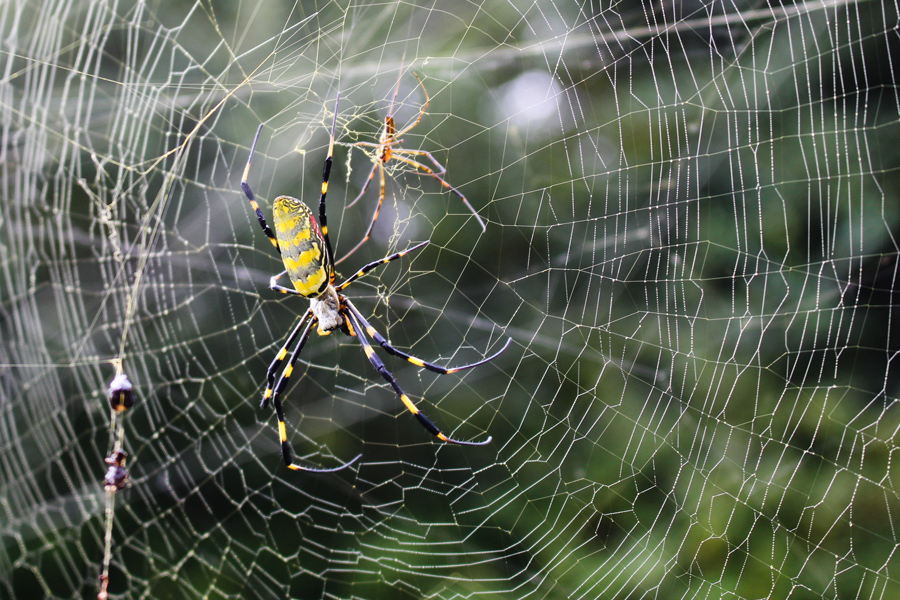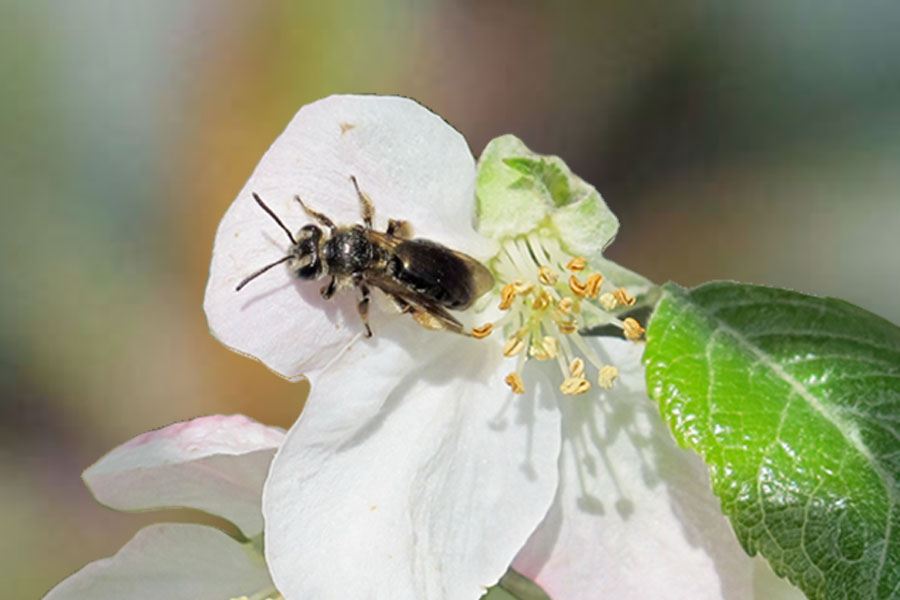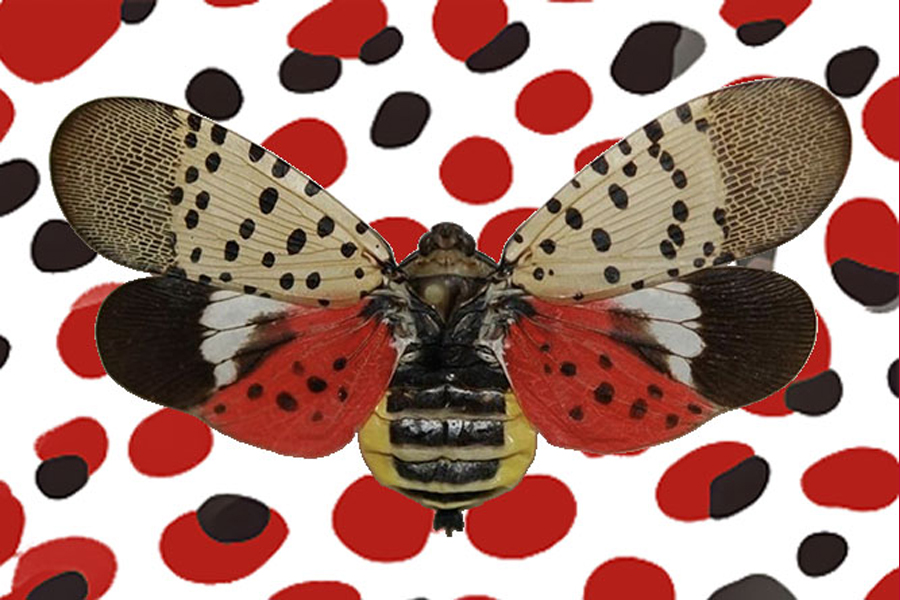

The Joro spider is native to East Asia and was first detected in Georgia in 2014. It is found in Georgia, North Carolina, South Carolina, and Tennessee, and is spreading to adjacent regions. It has one generation per year in its native range.
Adult females become sexually mature in September and early October. The female’s body is bright yellow with broad, horizontal bluish-green bands on the top side of the abdomen, and large red markings on the bottom side of the abdomen. She also has long, black legs with yellow-orange bands or—rarely—all black legs. Adult males mature by late August. The male’s cephalothorax is light brown with two dark brown long bands on both sides. His abdomen is elongate-oval with a greenish-brown topside that has two yellowish long stripes on both sides of the dark brown middle line.
Are Joros disrupting the ecosystem and displacing native species? This is a big question that a newly formed team of scientists is working on. However, we also need your help. The first thing we need to know is where Joro spiders are. Use the Joro Watch website (https://jorowatch.org) or the EDDMapS app to submit observations from parks, forests, and even your own yard. Fill out the report form and, if you can, count how many Joro spiders you see and upload pictures.

Published by University of Georgia Cooperative Extension. For more information or guidance, contact your local Extension office.
The University of Georgia College of Agricultural and Environmental Sciences (working cooperatively with Fort Valley State University, the U.S. Department of Agriculture, and the counties of Georgia) offers its educational programs, assistance, and materials to all people without regard to age, color, disability, genetic information, national origin, race, religion, sex, or veteran status, and is an Equal Opportunity Institution.
Status and Revision History
- Published on October 31, 2022
What is a Circular?
Circulars are more focused than Bulletins and will discuss one subject in a limited form.
Written and Reviewed by Experts
This resource was written and reviewed by experts. Click below for more information on how we produce science you can trust.






